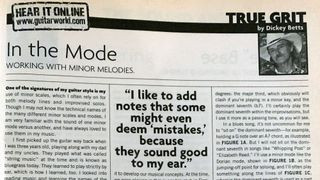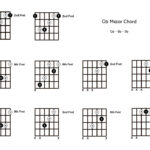Dickey Betts stands as a monumental figure in guitar history, universally celebrated as one of the greatest guitarists of all time. His distinctive and instantly recognizable style was a masterful tapestry woven from blues, rock, country, Western swing, and Appalachian string music. Delivered with the finesse, tone, and technique of a true virtuoso, Betts’ guitar work carved a unique space in the landscape of American music. For a decade, from 2005 to 2014, I had the profound honor of sharing the stage with Dickey in his band, Great Southern. This period represents some of the most enriching musical experiences of my life, a true privilege that allowed me to know him not just as a legend, but as a friend.
As a founding architect of the Allman Brothers Band, Dickey Betts’ phenomenal guitar work and songwriting genius were instrumental in defining Southern rock as a distinct genre. His musical partnership with Duane Allman produced a groundbreaking approach to harmonized guitar lines. This innovative guitar work, characterized by beautifully intricate and interwoven melodies, became a hallmark of iconic songs such as Blue Sky, Revival, and In Memory of Elizabeth Reed. Betts’ impact on generations of guitarists, musicians, and the broader spectrum of American music is truly immeasurable, a testament to the power and originality of his guitar work.
My decade-long journey as Dickey’s guitarist involved over 250 performances across the globe. From extensive tours across the United States to international performances in Japan, Germany, Poland, and Spain, the memories forged during these years are countless and invaluable. My time immersed in Dickey Betts’ world provided me with profound lessons about performance and life itself, lessons that surpassed all my prior experiences.
Dickey Betts had long been a personal guitar hero. My deep appreciation for his guitar work began with my first encounter with the Allman Brothers Band through their seminal 1971 live album, At Fillmore East. As a budding 15-year-old guitarist, I vividly recall hearing Statesboro Blues on the radio, ignited by the iconic introduction, “Ok, the Allman Brothers Band!” and Duane Allman’s searing slide guitar playing.
Driven by this inspiration, and just beginning to explore slide guitar myself, I dedicated myself to mastering Statesboro Blues. I meticulously learned every slide solo by Duane and every intricate guitar part played by both Duane and Dickey on the entire At Fillmore East album. Little did I know that this intensive study of their combined guitar work would profoundly shape my future musical path in ways I could never have predicted.
 Dickey Betts in Guitar World magazine, showcasing his signature guitar work and style
Dickey Betts in Guitar World magazine, showcasing his signature guitar work and style
Having contributed to guitar magazines for years, I had been fortunate to interview, collaborate with, and befriend many guitar luminaries, including Johnny Winter, Buddy Guy, B.B. King, Jeff Beck, and John McLaughlin. However, up until 2001, Dickey Betts remained outside this circle.
During the 1990s, my friendship with Allman Brothers guitarist Warren Haynes developed, leading to numerous backstage visits at their Beacon Theatre shows in New York City. On several occasions, I observed Dickey from a short distance. He often sat apart, seemingly in his own world, projecting an aura of solitude that I respected.
In 2000, Dickey’s unexpected dismissal from the Allman Brothers Band became public. Amidst conflicting narratives, Guitar World Editor-in-Chief Brad Tolinski conceived of offering Dickey a monthly column. This platform, titled True Grit, would allow Dickey to directly connect with his global fanbase. I had the privilege of collaborating with Dickey on this column, which ran for over eighteen months and offered readers unique insights into his guitar work.
Through True Grit, Dickey shared the foundations of his iconic songs such as In Memory of Elizabeth Reed, Blue Sky, Jessica, and Ramblin’ Man. Readers gained insight into Dickey’s deep musical intellect and articulate nature as he discussed the origins of his playing, tracing back to his childhood immersed in music with his violin-playing father and uncles from Nova Scotia. This Acadian musical heritage, evident in recordings over a century old, subtly shaped the melodic essence of Dickey’s distinctive guitar soloing style.
“A cornerstone of my style is my dad being a fiddle player, growing up surrounded by those bluegrass fiddle melodies,” Dickey explained. He emphasized the importance of precision instilled by his cabinet-maker father, reflecting in his approach to music: “The fiddle had to be perfectly tuned, played with precise intent.”
“One day, I suggested to Dickey, ‘It would be incredible to sit in with you sometime.’ His generous reply was, ‘Any show you can make, call my stage manager Mike, and he’ll ensure a half-stack Marshall is ready for you.’”
Dickey elaborated on the early influence of his father’s musicality: “Those beautiful Irish folk melodies from the fiddle deeply impacted me, unconsciously at first, as I sought my own guitar voice. The inherent melodic sense I inherited became deeply ingrained. This led me to explore a strong melodic dimension within the blues form, which I believe characterizes my style. Jessica exemplifies this influence.”
Developing these articles involved extensive phone conversations with Dickey. During one of these discussions, I ventured, “Dickey, it would be incredible to sit in with you sometime if the opportunity arises.” His response was surprisingly generous: “Any show you can make, call my stage manager Mike, and he’ll ensure a half-stack Marshall is ready for you.” Such an open invitation was unprecedented in my experience.
 Dickey Betts' True Grit column in Guitar World magazine, a testament to his articulate insights into guitar work and musical philosophy
Dickey Betts' True Grit column in Guitar World magazine, a testament to his articulate insights into guitar work and musical philosophy
For the next three years, I made it a point to attend Dickey’s shows within a 100-mile radius. Between 2002 and 2005, I had the privilege of sitting in with Dickey and his band over 20 times.
To many, Dickey Betts was an enigmatic figure, his “hell raiser” reputation well-known. Yet, beneath the surface, he possessed a sweet and generous nature, coupled with a remarkable sense of humor. Personal encounters revealed a more nuanced personality than his public persona suggested.
In 2003, before joining his band, I was invited to Dickey’s home for his birthday celebration, a gathering primarily with family. As the only non-family member present, I experienced his warm hospitality firsthand. Later, stepping outside to call my wife, Dickey emerged with birthday cake, asking, “Looking for you! Don’t you want some of my cake?”
In 2005, a life-altering phone call came while I was at the bank. Dickey’s voice on the line: “Hey, my guitarist just quit, tour starts in a week. Want to do it?” Balancing a full-time role at Guitar World and family responsibilities, my immediate answer was “Yes! When do you need me?” His reply: “Right now!”
The challenge was immense: learning Dickey’s intricate, three-hour show in mere days. His setlists included complex pieces like High Falls, Nobody Knows, True Gravity, Jessica, Nothing You Can Do, Revival, and a wealth of Allman Brothers and Great Southern material, plus new songs. Armed with transcriptions, I dove into rehearsals, and from the outset, we were in motion.
At my debut show, a private event at B.B. King’s in New York City, I went onstage for sound check. Dickey joined me, and without preamble, said, “Let’s play High Falls.” As we began the harmonized opening, he stopped us, offering a crucial piece of guidance about his guitar work: “Play the parts more delicately. Think of our guitars harmonizing like the Everly Brothers sing.” This insight profoundly shaped my approach to harmonized guitar parts throughout my time with him.
Frequently asked about working with Dickey, I emphasize his profound artistry and sensitivity to every musical detail and band member contribution. His descriptions of desired sounds were often impressionistic. For the final Jessica harmonies, he instructed, “Imagine leaves gently falling, drifting in the breeze as they descend.” This evocative imagery perfectly conveyed the desired sonic texture, understood by all.
During our first tour, bus conversations often turned to his departure from the Allman Brothers Band, a topic that evoked deep emotion. The band’s music and audience connection were paramount to him, and his frustration was palpable, yet he never spoke negatively about bandmates. He always referred to Gregg Allman respectfully as “Gregory,” praising his “golden voice.”
“For six years, Duane Allman’s slide became an essential part of my guitar work, used at every performance.”
In 2011, post a Rock Legends cruise, in his music room with guitar tech Carlos Rodriguez and myself, we discussed setlist additions. Suggesting Pony Boy, I remarked on its brilliance. Dickey responded, “Played that on acoustic resonator; not sure I recall it.” He then picked up a resonator guitar and flawlessly played Pony Boy’s intricate slide part. Effortless mastery. Carlos and I were stunned.
Then, he turned to me, “Didn’t I give you one of Duane’s slides?” I replied, “No!” He returned moments later with a glass Coricidin bottle, saying, “Found one – here.” Hesitant to take his only one, I protested. “There are others somewhere,” he insisted, “Use it if you want.” Without hesitation, I accepted. For six years, Duane Allman’s slide became an essential part of my guitar work, used at every performance.
Dickey Betts was complex, driven by passion for music, with high expectations for his band. His demanding nature and leadership by example elevated everyone’s musicianship. Playing with Dickey Betts and knowing him personally is an honor for which I am eternally grateful. His extraordinary musical gifts have enriched the world, and his enduring legacy of guitar work will resonate for generations.


